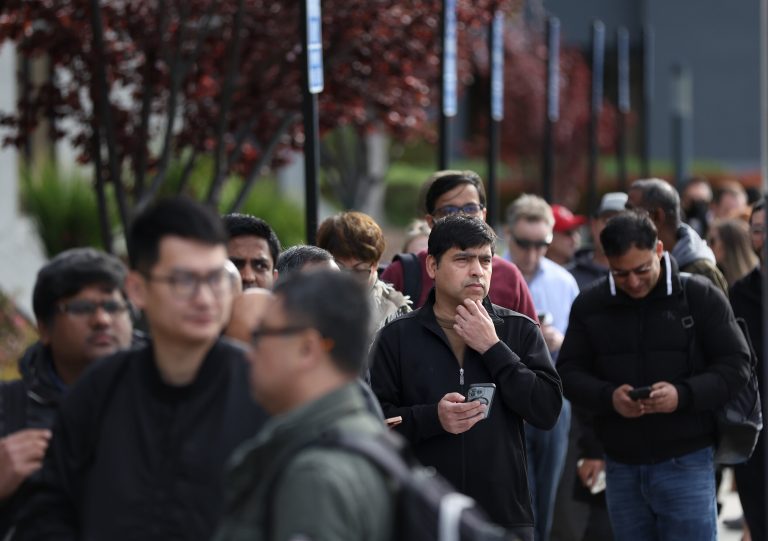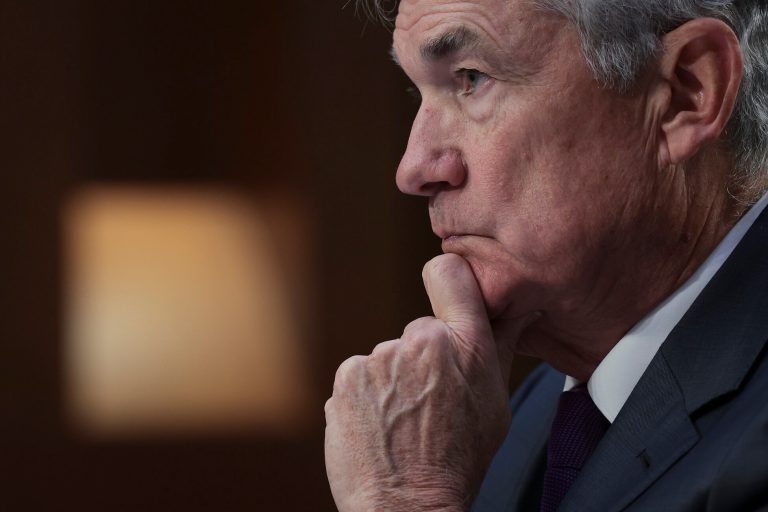The collapse of Silicon Valley Bank over the weekend has, if nothing else, served as one more reminder of the Everything, Everywhere, All At Once interconnectedness of the US economy.
SVB leadership, as you’ve no doubt seen from news reports, committed some basic errors such as failing to appropriately hedge the interest rate risk in its investment portfolio, and now here we are. Five months after President Biden insisted that the economy is “strong as hell,” Wall Street is reeling from two bank failures since Friday (one of which was the second-biggest in US history). Silicon Valley tech companies are laying off workers in droves — and VC money, by the way, has slowed, which hurt SVB’s deposit base — while the cost of everything is continuing to soar.
Trader: Greed has ‘come home to roost’ in Silicon Valley Bank collapse
According to Federal Reserve data, aggressive money-printing and stimulus checks to fight the pandemic sent inflation surging. So, now, the central bank is pursuing its most aggressive interest rate hikes since the 1980s — which was one of the factors that led to SVB’s insolvency.

At the same time, the causes and consequences of the US’s second-largest-ever bank run have ripple effects that we still don’t know the extent of yet.
“With regard to who’s to blame here, I think that the greed and avarice that has long been present in Silicon Valley has come home to roost,” Keith Fitz-Gerald, a trader and principal of the Fitz-Gerald Group, told CNBC on Monday.
“We had the Federal Board of Reserve change from fractional reserves to no reserves, and that let banks like SVB go out and start buying assets instead of simply loaning money. My contention is banking should be boring, a lot like watching paint dry — and any time it’s not, you’ve got a problem. Which is unfortunately what happened.”
Welcome to the Everything, Everywhere, All At Once economy
To my related point about this being the Everything, Everywhere, All At Once Economy — the mistake that US political leaders keep making over and over again is in assuming or acting like their ideas which sound good at the moment are consequence-free. We didn’t want the country to collapse into a second Great Depression during the pandemic, for example, so we fired up the proverbial money-printing presses. An understandable move, but not a consequence-free one — in fact, we’re in the middle of paying for that decision right now.
As a result of an excess of money flowing through the sluices of the economy, prices are soaring and interest rates are at record highs.
Now, though, the central bank is arguably in an even worse position.
One of the decisions announced on Monday to prevent SVB’s failure from turning into a contagion that sparks more bank runs is the following: Prior to the SVB crisis, the FDIC guaranteed every depositor dollar in US banks up to a maximum of $250,000. Even if a bank collapsed, in other words, you’d still get your money up to that max amount.
In the case of SVB, however, the FDIC now says it will make sure every single depositor has every dollar they had in the bank covered even above the $250,000 threshold. A logical-enough decision, but now look what happens:
The implicit guarantee is that the $250,000 threshold basically doesn’t exist anymore. Because if you do this for SVB, you’ve got to do it for every other bank in Silicon Valley, as well as all the rest from Wall Street to Main Street. If that medicine were to be confined only to SVB, then all you’ve done is kicked a potential bank run down the line to whichever bank is the next one to fail.
Money is printed ‘because it works so well’
So, what now? Do you think the FDIC’s coffers are currently big enough to stand behind the entire deposit base of the US banking system? (Answer: They are not)

Banks pay a premium to the FDIC to keep the kitty flush enough to cover everyone’s deposits … again, up to $250,000. Where does the money come from to now cover the entire deposit base of the country’s banking system?
It comes from that same magic land that money originates from generally anytime policymakers in Washington get another bright idea for how to spend money that isn’t theirs.
Custodia Bank CEO Caitlin Long tweeted on Saturday that — again, because we’re in an Everything, Everywhere economy, even though this whole thing was sparked by one specific bank — the Fed can only now do 1 of 2 things: It must either decide to accept the risk of SVB-style bank runs in the future (which it’s already made clear it doesn’t want to do) or hit the brakes on interest rate hikes and the quantitative tightening that caused this whole thing to begin with. The latter, of course, means printing more money, which means more inflation — which means delaying the pain we’re trying to avoid today.
“2000, 2008, 2023, it is always the same,” The Big Short investor Michael Burry said over the weekend in a tweet that he’s since deleted. “People full of hubris and greed take stupid risks, and fail. Money is then printed. Because it works so well.”








